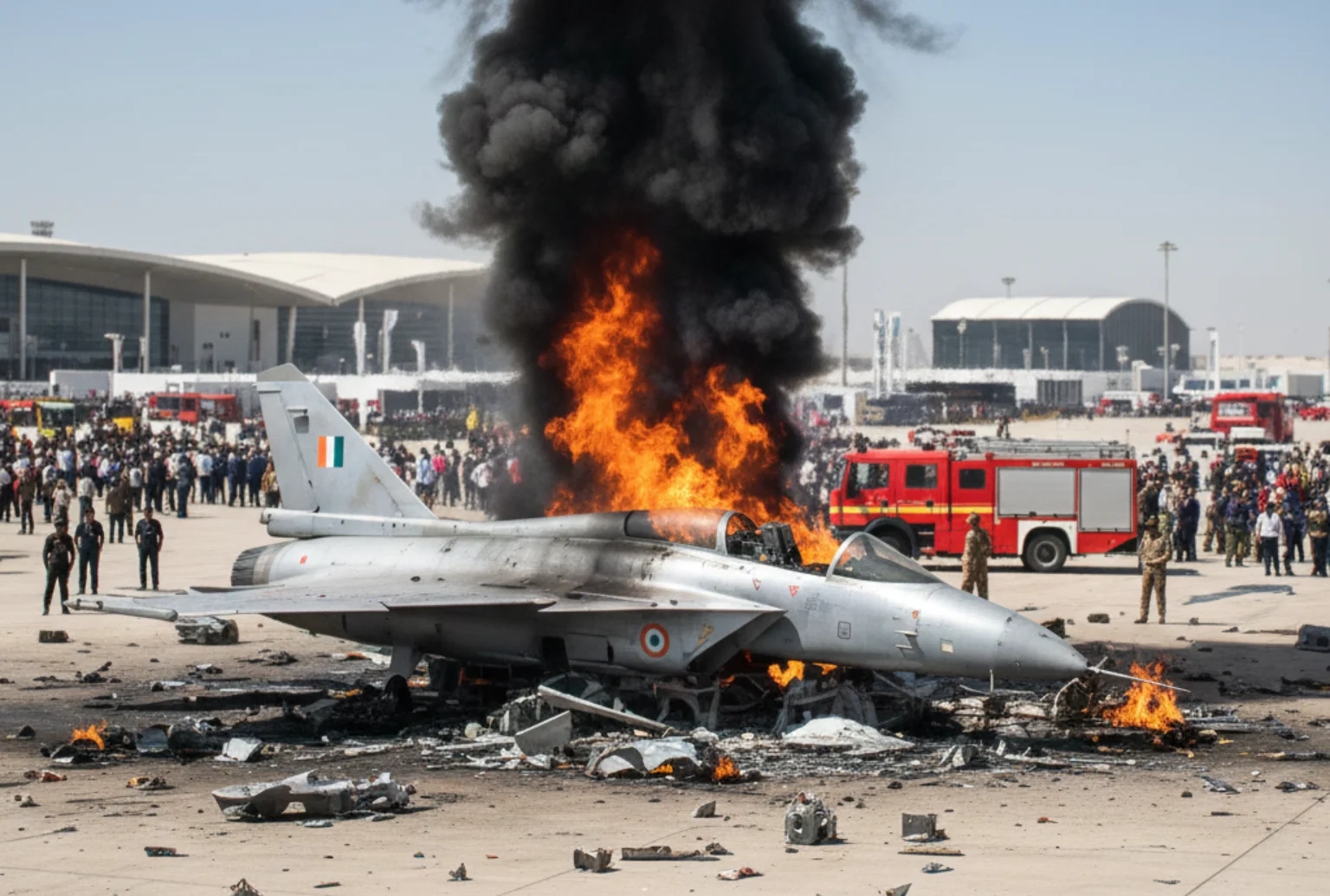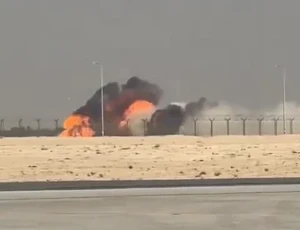Tejas Crash at Dubai Air Show: India’s Pride Turns to Global Doubt

The crash of the Indian fighter jet Tejas at the Dubai Air Show has claimed the life of a pilot and shattered India’s self‑proclaimed narrative of military self‑reliance. What was meant to be a showcase of indigenous capability became a global embarrassment, raising questions about the credibility of India’s defense system and exposing weaknesses long hidden behind slogans of “Aatma Nirbharta.”

The Accident
According to reports, the accident occurred at 2:10 pm during an aerobatic stunt. The aircraft went down in front of spectators, forcing organizers to immediately suspend the fighter jet demonstration session, one of the most anticipated highlights of the Dubai Air Show. This tragedy marked the first crash in the history of the prestigious event, shocking aviation enthusiasts worldwide.

Investigation Underway
Authorities are investigating whether the crash was caused by a technical fault or pilot error. Information about the pilot is being sought, while experts examine the aircraft’s condition prior to the accident. Aviation analysts have already pointed to visible leaks and structural weaknesses in pre‑flight photos, raising concerns that the aircraft was flown despite apparent flaws for publicity purposes.
Background of the Aircraft
The Tejas program dates back to 2001, when the aircraft completed its first test flight. The jet involved in the Dubai crash had been in service since 2016 and was presented as a symbol of India’s domestic defense manufacturing. Yet the Tejas has faced repeated scrutiny over reliability, with critics questioning whether it truly represents indigenous strength or simply political showmanship.
Previous Incidents
This is the second Tejas crash in less than two years. In March 2024, another Tejas fighter jet went down in Jaisalmer, Rajasthan. Earlier this month, a video from the Dubai Air Show showed oil leaking from a Tejas fuel tank, further fueling doubts about its safety. These repeated failures suggest that the problem lies not in isolated incidents but in the very foundation of India’s defense engineering and decision‑making chain.
Expert Analysis: Possible Technical Defects
Aviation experts have outlined a wide range of possible technical failures that could explain the crash. They mention risks such as structural breakdowns during high‑G maneuvers, cracks in wing spars, tailplane or elevator failure, and hydraulic malfunctions that can make control response unbalanced or absent. Control system issues like jamming of ailerons, elevators, or rudder due to linkage breakage, runaway trim problems, or cable failures in older aircraft are also considered. Engine and power plant defects, including sudden engine jamming during vertical climbs, fuel shortage under negative G, or propeller governor malfunction, could lead to stalls and spins. Experts further note that instrumentation and avionics failures such as faulty attitude indicators, overspeed due to airspeed indicator closure, electrical system breakdowns, or fly‑by‑wire stability loss may contribute to accidents. Aerodynamic and mechanical risks including control surface separation, rudder detachment under high pressure, propeller blade root cracks, canopy separation, or shock‑induced stalling during high‑speed pull‑outs underline the complexity of diagnosing the exact cause.
Systemic Rot Behind the Crash
The tragedy cannot be separated from the broader weaknesses in India’s defense establishment. A United States Congressional report had already flagged corruption, lack of transparency, and political interference in Indian defense procurement. The Tejas accident now stands as a practical illustration of those concerns. Flying the aircraft despite visible flaws reflected a bureaucratic arrogance where perception mattered more than reality, and where institutional decay was hidden behind slogans of self‑reliance.
Illusion of Military Renaissance
India had hoped to use the Dubai Air Show to project a military renaissance, but the Tejas crash revealed the opposite. It exposed flaws in engineering, procurement, and command structures, showing that no amount of narrative, media hype, or publicity can hide the reality of a system weakened from within. The eighty‑three billion dollar defense budget, often presented as proof of transformation, was reduced to wreckage scattered across the runway.
Lessons from the Crash
The Tejas crash at Dubai is more than a tragic accident. It is a symbol of systemic decline that has turned India’s claims of indigenous strength into global doubt. It highlights the dangers of prioritizing image over substance and demonstrates that military power cannot be manufactured through propaganda. True credibility must be earned through integrity, engineering excellence, and accountability, qualities that India’s defense establishment now stands accused of lacking.

